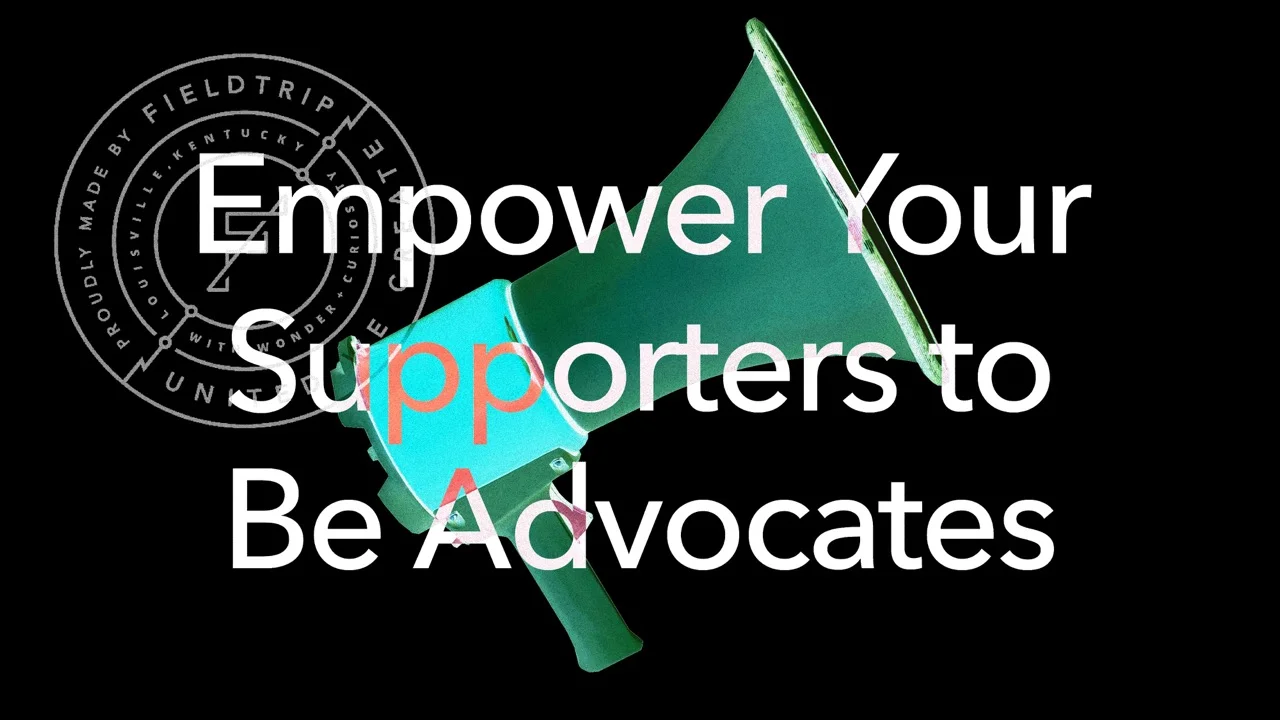Hello, I’m Jane Pfeiffer, founder and president of Fieldtrip. At Fieldtrip, we work with nonprofit leaders to help them solve some really important issues. One of them is that they’re stuck in where they are today and they know that what got them to that point really won’t take them into the future because the world is changing. People are changing so fast, it’s changing quicker than nonprofit organizations can move.
Sometimes we have to break things down into little bits and pieces to make a change. When we look at the whole picture, it can be overwhelming. Today, I just want to share a moment of inspiration. I was driving during a road trip and queued up my favorite podcast, which is Revisionist History from Malcolm Gladwell. The episode was called A Good Circle. Malcolm interviewed Matt Scogin, who is the president of Hope College. Now Matt’s journey to Hope College is quite unique. He didn’t come through academia. He came via Wall Street. He was a graduate of Hope College, so he knew it intimately. He had an appreciation for what it did for his career.
Like many small universities, Hope College meant something to a few people, but it was largely undervalued, forgotten, or not even known by most people. It was way under the radar, I think would be a fair statement. However, after taking the position, a friend of President Scogin joked with him, and this is a quote from the podcast in a snarky way, that well, “no one should have to pay for hope,” insinuating that education and hope wasn’t worth that much.
It wasn’t even worth the price of tuition, which at the time was about $33,000 a year. Matt Scogin shares how this quote for most people would have been an insult. But for him, it was a turning point because, with this statement, he started a program called Hope Forward. Hope Forward is a program that ensures every student has access (many colleges can claim this, but they offer it to all students) by offering attendance without tuition. It’s a unique pay-it-forward approach that relies on the generosity of sponsors, good people, neighbors, and gratitude from alumni and others who have benefited from an education or a relationship with Hope. Now, I could go down a rabbit hole here because I love Malcolm Gladwell’s perspective on higher education, and Hope College is an anomaly, but it’s a model that I think should become more common, especially with universities that are uber well-funded and could do it by just saying they’ll do it tomorrow and the program starts. But that’s the rabbit hole I vowed not to touch today. What struck me the most was the statement “No one should have to pay for hope,” and that was hope with a lowercase “h” for me.
In working with nonprofits, I realized that often what their mission provides is hope. Hope to their beneficiaries that tomorrow or today might be a little better than yesterday. Hope to benefactors that they’re contributing to solving a really big and complicated social issue. And hope is an active state of mind that drives us towards something better than the current moment and from something outside of ourselves. It’s a belief that something positive is possible, even though we don’t know what comes next. The opposite of that is living in fear and worry, and even the best of us can succumb to that on certain days.
As a nonprofit leader, you might get lost in the tactics of your mission. I know I get lost in the tactics of what we do every day – the who, the how, the what, and the where. The more we focus on the why, the more likely we are to feel and provide that sense of hope. That’s how we get to making sure that no one has to pay for hope. So my question to you is, how can you add hope to every interaction that you have outside your organization? And inside, how can you infuse hope into fundraising and development efforts? Would you rather have a donor focused on their donation and how many meals it buys, or that their financial support is providing a solution and they’re hopeful for what that means to their neighbors and their community or this sector as a whole? It’s crucial to make hope a part of every touchpoint of your organization. That’s my request for today. Thanks for watching. For more videos, visit wearefieldtrip.com/nonprofit.



